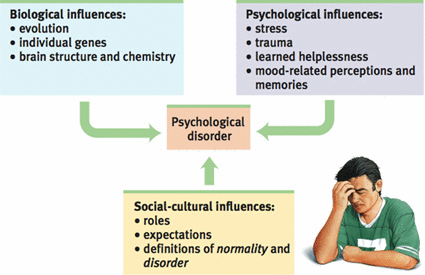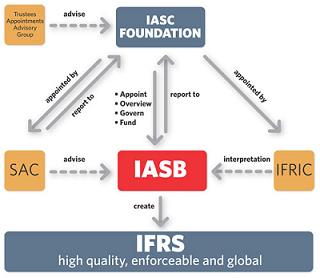Cultural factors in diagnosis and treatment are highly imperative. This paper includes critical thinking on the perils of using mainstream methodology with non-Western cultures.
Cultural factors have deep roots in the clinical psychology. Cross cultural psychology has now become an inseparable idea in clinical psychology. Culture cannot be avoided in order to make a precise judgment on mental problem. The paper is based upon literature review on various academic articles and books written to cover the significance of culture in clinical psychology. It offers systematic review based upon authentic basis regarding psychological treatment considering the cultural factors involved in diagnosis. Efforts are expected to focus on accurate judgment, suitable therapeutic process and an eventual release of the painful feeling.
The capable psychoanalysts must be devoted, and eager to understand the cultural backdrop, past experiences and its correlation with the psychological diagnosis and handling of the case. Also a patient from non-western cultural background must be treated with extreme care while considering his cultural beliefs as important indicators to achieve optimum output; an ultimate relief for the patient.
Respecting the consensus developed by historic and contemporary professionals, a psychologist can enhance efficacy of the treatment and avoid the perils of the mainstream methodology in treatment of non-western cultures.
Cultural factors are one of the most significant variables in the field of clinical psychology. A clinician cannot aim for precise diagnosis and appropriate treatment without considering the culture of the patient as a guiding principle, as many of the psychological behaviours are directly influenced by the cultural norms.
The paper presents a review of different cultures and their requirement for the diagnosis of treatment on mental health problems. It will also highlight potential harms of applying mainstream methodologies on a non-western client. A detailed literature review will explain the main aspects of non-western culture and culture related attitude on mental health.
While treating the mental disorders, it will be useless if a general method is applied on everyone, without studying the socio cultural background of the client and salient features of the specific culture. We can explain its importance through an example; drinking habit may be a serious issue in a culture and may demand psychotherapy to get rid of it, but it is possible that it is considered as a normal thing in another culture.
Also shyness of a female towards the males can be considered as a psychological problem in the western culture, though it may be considered as a normal behaviour in non-western traditions. Any diagnosis cannot be appropriate unless it is seen through the lens of the culture. Every psychological disorder has a deep connection with religious beliefs, ethnic norms, and native environment.
An expert clinician has to identify that root first before making a professional judgment on the problem, type of treatment and therapeutic process required, and mannerism of the sessions, and required cultural sensitivity aspects during the therapies. The need of cognitive testing can only be identified after thorough analyses of the cultural factors behind the problem.
Cultural factors in psychological diagnosis and treatment; an overview
Psychological diagnosis is very much dependent on the symptoms in human behaviour. Talking about the general perception on mental illness or disorder, anything different from a usual behaviour is referred as a psychological disorder. These perceptions are closely related to the culture possessed by the patient and also the interpretation of any behaviour as according to the cultural norms.
We can understand this phenomenon by an example of some sort of mania. Mania is almost a common problem found in almost all the cultures, but the clinician must be very careful in diagnosis, as there is a probability of confusing the culture related expression of distress as wrong diagnosis of mania. We can observe cultural diversity in stating the depression, but it may be under diagnosed, usually on initial stage and careful measures are not taken.
It is true that somatic characteristics may be identical in all the cultures, yet, it is critical to differentiate physical descriptions of a sentimental situation. Generally ways of expressing depression are different in all the cultures, however, sad mood, unwillingness in enjoying something, nervousness, and feeling energy less are common symptoms of depression. Culture cannot be neglected for any sort of psychiatric treatment like, while classifying depressive disorders, for example, we have to consider both internal factors within the individual and external factors related to the culture of the subject (Cowen P. et al. 2012. p212).
In the discussion, as it follows, various culture factors will be elucidated as they influence psychological diagnosis and treatment in various situations. It is also important to know how the treatment can cause harm instead of healing the suffering if a client from non-western culture is dealt in mainstream methodologies of diagnosis and treatment.
Cultural diversities and mental health
Culture is an inherited asset which travels from generation to generation. This is a factor which has direct influence on all aspects of the lives of human beings. As far as the approach on mental problems is concerned, it varies from person to person, family to family; various ethnic groups, culture to culture and country to country.
It has been observed that culture and religion have a strong influence over the mental health of a person, and initiation of mental illness. Also cultural mannerism of responding towards such problems, determines the extent of agreement of the patient for mental sickness treatment and consistency in this regard. It is very important to understand that representation of mental wellbeing service demands cultural sensitivity for improving acceptance and awareness on the use of these services.
This will help to reform approach about mental illness, as it is different from the one customary in the west. We can review a case study to understand this difference. This comparative study was conducted by universities in India and America, to compare behaviours in India and USA. It was found that the students from India perceived depression as an outcome of the factors like, being unsuccessful in achieving goals, or else which can easily be controlled by them individually, and felt that only way to manage depression is to ensure social facilitation and religious practices. They suggest that understanding and treating depression must consider diverse point of views on mental illness for enhancing the efficacy of mental wellbeing plans (Nieuwsma, J.A.et al. (2011). p 539-568).
Relationship of psychology and culture has been discussed by many expert psychologists, according to Triandis H.C. quoted by Kitayama S. and Cohen D. (2010), history of psycho-cultural tendencies have shaped the contemporary approaches of cultural psychology, and the future of this field is also based upon the same.
He emphasizes on the close connection of the language; a salient feature of each culture, and psyche. He believed that language is the key to understand the thoughts of the speaker. Due to interaction of various people within the same culture, many agreements are found on the ways to behave collectively. These practices by the time shape the mind accordingly, thus we can say, an individual expresses his culture which he has been brought up (Kitayama S. and Cohen D. 2010).
Mental illness as a stigma in various cultures
Perceiving mental disorder as a shameful fact may be due to many reasons, for example, any of the apparent reason of the sickness. Many studies have reported other major distinctions in behaviour towards mental illness amongst cultural groups in the USA. Carpenter-Song et al. (2010) performed a thorough, one and a half year long culture based study.
The subjects for the study were 25 patients with critical mental illness. These were European-American patients engaged in regular treatment by expert psychiatrist, inclined to state convictions about mental sickness associated with medical viewpoints about the illness. Contrary to this, people belonging to Africa, America or Latin patients were more liable to highlight non-medicinal explanations about the signs of mental disorders.
Though, all the subjects from 3 cultural clusters shared about some sort of stigmatization because of their mental problems, this very shamefulness sentiment proved to be a main part of the African-Americans reactions, hence it was not focused in case of European-Americans, instead they inclined to consider mental problems as major and most important side of the human requirements on health.
As far as African-Americans were concerned, they were frustrated when the clinicians emphasized on the need of medication. In case of Latin persons, they generally considered diagnosis of mental sickness to be a severe damage to their social image and status; they focused on stating the sickness on a very low severity to stay safe from extreme stigma (Carpenter.S. E. (2010) p 224-251).
As argued earlier, when we talk about stigma, its severity may be different in different individual cultures, which refers to a diverse nature in western and non-western cultures. In the non-western culture, sentiment of dishonour linked with mental disorder is very high. In such cases a mental situation, in which the patient thinks as if he is humiliated or not cared by anyone, leads to extreme loss of self-belief; thus the symptoms of mental sickness may even enhance.
Another evaluation of the association between ethnicity & cultural beliefs and mental disorders is conducted by Abdullah et al. (2011). This study illustrates thoughts on broad diversity of culture related ideas embedded in mental condition. For instance, a number of the cultures may not regard mental disorder as a cause of disgrace, some of those only focus on the extreme problems but others may feel shame on disorders of any level of problem. Generally, non-western people are highly anxious about their traditions, self-control, individual associations and expressive connections, mental illness is taken as shameful dilemma, not only for the specific person, but for the whole immediate and extended family. (Abdullah et al. 2011)
Resistance from the patients
Bailey et al. (2011) have shred about reluctant behaviours regarding mental treatment. He notes that sense of being ashamed, religion related misconceptions, lack of trust on the clinicians and language barriers and communication issues may be the reason behind this resistance in opting for mental health treatment as required (Bailey, R.K.et al. 2011 p 548-557.) In certain cultures clients show a lot of resistance just to satisfy their self-respect that they are normal and it will be real dishonour if they admit and accept need for mental treatment.
That is the main reason behind the concept that understanding culture of the client is very important, so as to understand the root causes of the resistance and reluctance. During the therapies, the clinician must develop a good rapport with the client, which is only possible with some awareness on the culture of the client. An expert clinician must focus on building a good relationship with the client during a few initial therapeutic sessions.
It may be performed through friendly discussion demonstrating interest in getting awareness on the client’s culture, which must be complemented through attempts to gain knowledge on the same through books and other sources, such as, friends and family of the client, other members of the same community and other internet sources.
This way the client will share many thoughts from his subconscious, and the root may be identified, along with a great control over the expected resistance from the client. Especially when we talk about non-western culture; as argued earlier; their stigma may be a great source of resistance. This can be overcome, if the client receives friendly signals from the clinician, and a sense of trust worthiness for thought sharing.
Cultural sensitivity while treating non-western clients
Generally, Non-western clients, especially Muslims adhere to their religious beliefs; therefore, it is crucial to be aware on the cultural heritage, and religious background of the Muslims for the contemporary psychologists, so as to ensure efficacy of the treatment, as this group of clients is rather difficult and needs to be understood properly. We have a discussion about the Muslim cluster in the non-western culture as it the biggest majority group in the non-west representation.
Considering religion, as a central point of the human life, makes it possible for a practitioner to manage therapeutic process with a high level of skill and anticipation of the optimal output, when tackled in religious framework. Religious beliefs, spiritual thoughts and mental health have an interesting correlation to apply for treating several mental disorders efficiently. Keshavarzi H. and Haque A. (2014) in an article highlight the need of improving the psycho-treatment procedures with the help of its integration with the culture and religious values, while treating Muslims for psychological disorder.
Religious faiths about the reason of mental sickness are typically unconnected to biological systems. Most of these are considered as a curse due to any bad deed in the past, or due to some spirits. However these symptoms may be different in the young and old generations. Also the nature of sickness differs in the native non-western client and second generation borne in a different culture. (Keshavarzi H. and Haque A. 2014)
Keshavarzi H. and Haque A. (2013) also quote Veling et al., (2008) who have highlighted non-western tendency of community based culture. It is a general norm that Muslim are fond of replication of a community environment similar to the native culture, wherever they live, such as community centers, caring for right of neighbours, selfless attitudes, mutual reliance and family values. These strong bonding practices generally tend to reduce chances of mental problems.

Lack or absence of cultural knowledge, especially on religious faith, norms and practices by non-Muslim therapists may be a hurdle in creating a remedial association with the client. It is important to be aware of certain practices which are extremely conflicting with Muslim cultures as observed in the west. Male and female interaction can be one of the examples, which is extremely prohibited in Muslim culture, though considered a normal matter in other cultures. This can lead to a serious problem during the sessions, if not understood according to the cultural requirements. For the therapist, it is also recommendable to make collaboration with religious leaders, so as to enhance religious understanding on the Muslim psyche and Islamic modes of treatment (Keshavarzi H. and Haque A. 2013).
We see that there is lack of sufficient materials on culture specific treatment methodologies for non-western clients. Many therapeutic concepts cannot be applied on the non-western client the way these may probably be efficient for the western client. Treatment of non-western client, though complicated, it also holds many helpful resources within its roots.
As we see that in the non-western culture, family values and social relationships are highly cherished. These may a helpful tool for resource mobilization. To cope with language barriers family members can be a helpful resource. Another precaution is also recommended by Cowen P. et al (2012) that assigning a translator during sessions also demands special care about the selection of the person to interpret. As a general observation it is a fear that involving a translator, other than the therapist himself, may cause difficulty to achieve specific results, besides ever-increasing the duration of the meeting. Mare transformation of the language may not be helpful while the person is not a health expert, sometimes the spirit of the conversation is lost while translation process.
This problem can only be conquered with the help of same community members, close family relation, or assigning a professional psychologist, the responsibility to communicate and interpret with the non-western client, and then be a part of diagnosis and therapeutic process. These dissimilarities are not exclusive for Muslims only; the other representatives of the non-western culture, such as Hindus and Buddhist are also different in terms of their traditions, norms and their approach towards mental illness, from the western culture. The same requirement of studying the specific culture persists for the therapist for a patient who belongs to any of these cultures (Cowen P. et al 2012).
All these arguments on the study of clinical psychology elucidate that dealing mannerism must represent adaptability according to the requirement of the culture when handling patient from a culture, which the therapist does not belong to. It must be understood that mainstream psychological methodologies might not fulfill the extraordinary needs of the situation.
It is also quite natural that a single person may not possess the knowledge about each and every culture in the world, which makes things more complicated for the psychologist to have the anticipated outcomes. In some cases patients may even assume biased behaviour from any person or a group, financial stress, and a feel of inaccessibility to services if he is uncomfortable in any other culture, this might transform into the symptoms of mental illness later on. As a general observation, most of the cases of migrants emerge due to adaptability issues and may become severe if not handled on time with due diligence (Cowen P. et al 2012. p. 26. Ch 3).
As argued earlier, mental health issues with the systematic application of connection with the clients may notably increase because, most of the issues come forward because of cultural intricacy. Even the best knowledgeable practitioner may not be able to ascertain mental well being of a patient, if, he does not make himself well aware of the culture; the patient is coming from, and all probable cultural approaches which may be contributing in increase of mental illness motives in the subconscious of the patient.
The contemporary studies emphasize that culture has unambiguous connection with psychological problems. A psychotherapist must not stress on conservative systems of treatment, and bring in inventive thoughts in accordance to the requirement and judge diverse features of cultural psychology (Tseng W.S 2008).
As we learned from Keshavarzi H. and Haque A. (2014), that initial effort for applying the psychological approach is the precise judgment of the issue and the performance level of the patient. In this regard, the therapist has to collect information which is essentially required for treatment. If the judgment indicates a high tendency of the client towards religion, the therapist must take that into account. This may be evaluated during initial informal discussions through the use of terminologies and his general approach.
The clinician must have an intention to develop an understanding with the patient on how the objective of the treatment is set. Later, a detailed session should be conducted to assess how he expects the improvement as a result of the therapeutic process. If the patient does not take interest in self-actualization, and wants focused attention to the specific problem, therapist must not resist, and make the client comfortable, removing discomforts of cultural difference (Keshavarzi H. and Haque A. 2014).
When we talk about the cultural beliefs in Arabian culture we cannot exclude religious and traditional methods of the psychotherapies. The majority of the Arabs rely on conventional healers, also referred as faith healers, such as experts of herbal medicines, religious elders of the region, healing through rituals. Unfortunately the initial level of mental disorder is assumed to be an assault of evil spirits such possession of the body, which can just be treated with the help of rituals. Treating the mentally ill person is believed as a punishment for the patient, that might mark him as a crazy or abnormal person forever, thus restricting hi normal movement in the in the society for the rest of his life (Parekh R. 2013).
The most complex idea about this subject is the command of a clinician about the features of every culture. Though it is not simple but the clinician must be open to learn about the cultural features which truly have an effect on the healing procedure. Cultural knowledge compliments the success of the healing procedure by demonstrating respect for the patient and the culture. The most important aspect of the point is that a proficient psychologist must be impartial, enthusiastic, and considerate on the cultural surroundings, the history and its link with the course of analysis and therapy.
The whole discussion stressed over an idea that culture and psychology cannot be viewed in isolation; we cannot suppose on the performance of brain and a culture bound psychosomatic approach, linked with one culture and expected to apply in any other culture, these aspects must be taken into account during therapeutic process.
While treating non-western clients, we must be clear on a few general distinctions in the culture, Such as:
- Adaptability issues
- Effect of religious beliefs on psychological beliefs
- Strong family bonding
- Reluctance of women on open communication with a male therapist,
- Entirely different social environment
- Less preference of psychological treatment as compared to physical issues.
- Language barrier
Keeping all these aspects in mind, a clinician has to show respect for that cultural characteristic to develop outstanding professional relationship with the patients. Talking about sentimental problems in a responsive manner may help in this regard, because, general tendency of the non-western clients demonstrates shyness in discussing personal events, which may point towards the roots of the problem which may be linked with the cultural beliefs. Thus, to discover secrets of the subconscious, information on the patient’s culture is unavoidable.
As we have already discussed that family bonding and social relationships are very strong in the non-western culture, these may also give rise to some problems related to the expectations associated with these values. These false expectations may give birth to a feeling of disappointment or betrayal from a close person. It also makes them feel that those people have wasted their sacrifices and have not cherished their support. This leads to anger and fury for their own selves as well as for others.
This also gives rise to hopelessness, and trust over others including their psychologist. It can also result into discontinuation of constructive attitude; which generates dire need of family support, counselling and cognitive therapy with individual. A feel of being deprived regarding marital rights can be an example of such cases. These sort of cases are culturally sensitive and may be dealt with high care, after acquiring sufficient knowledge of the specific cultural values and norms (Keshavarzi H. and Haque A. 2014).
Mainstream methodologies: Benefits and Perils
Before concluding the paper, we must focus on the perils of the mainstream methodologies when applied in non-western culture. During our argument, one thing has been concluded that we cannot study psychotherapeutic treatment in isolation; culture must be included in the analytical process. We can classify the type of clients in two culture specific groups:
- Western culture
- Non-western culture
Both have very clear dividing lines for general understanding on cultural beliefs. As we conclude that cultural beliefs play a major role in psychiatric diagnosis and treatment. The very first step involves the basic understanding on the culture of the patient and to what extent these beliefs and norm influence his cognitive behaviour. Though these are the two basic cultural groups, the non-western cluster may further be divided into more clusters based on religion and geographic trends.
Muslims; the largest group in the non-western culture are more influenced by the religious education, rituals, spiritual treatment and other limitations. The beliefs of the patients may not be agreed by the practitioner, however it is important, not to argue with the patient, and give him a feel that the practitioner believes him and respects his point of view. Other clusters within the non-western cultures should also be dealt accordingly. Suspicion on the clinician, being afraid of the treatment, being afraid of racist of discriminatory approach, language and communication barriers, and cultural & religious issues may hinder the successful treatment (Keshavarzi H. and Haque A. 2013).
This reaches the following understandings:
- Considering culture is the most important aspect in psychological treatment.
- Initial meetings should be focused on gaining awareness about cultural and religious tendencies of the patient.
- Physical interaction between male and female is strictly prohibited in non-western culture; this must be avoided at any condition.
- General methodologies may not be applicable to all the patients. In the study of psychology, every client has his unique identity, he must be dealt individually. The approach that proved to be successful for treating depression of a western women, may not work for exact replication for a non-western woman.
- The clinician must not try to influence patient’s cultural beliefs.
- The clinician must show respect for the culture to develop mutual trust and good professional relationship.
- Mare translation is not enough for the sessions, the interpreter must be a professional therapist, or a family or community member of the patient if the first option is not possible.
- Consultation with the family is also recommended when possible. This may also help to overcome stigma and seek early healing of the problem rather that making it worse due to delayed treatment.
- Depressive disorders may be similar in different cultures, however, the therapist must study, what is hidden behind the symptoms, inside the cultural context.
Conclusion
As a concluding note we can easily claim that psychiatric diagnosis cannot be made leaving the cultural factors behind. Making an attempt to do so may lead to commit wrong diagnosis and ultimately a wrong treatment. In advanced clinical psychology, wrong diagnosis and treatment is as dangerous as an unnecessary medicinal injection.
A clinician has to demonstrate high level of professionalism and skill to handle the case with careful cultural sensitivity. There may be chances to disagree with the client belief, and also his cultural belief may be opposite from the therapist’s cultural norms, yet, he must not mention so in front of the client. There is high probability for resistance from the client and he also may show distrust on the treatment, however, the therapist has to be unbiased and temperamental. He has to make the client feel that his opinion is respected; being a leader or teacher may not be an appropriate approach, rather than being a facilitator.
As any unnecessary medicine may cause harm, in the same way, wrong approach towards cultural psychology may be equally harmful. A uniform methodology may not be applicable in all cases. If the client is under strong influence of religion and other features of the culture, it may not be ignored. A good rapport with the client is a half way towards the successful psychological treatment, and understanding the Cultural Factors is the map to reach this destination. .
References
Abdullah, T., Brown, T.L. (2011). Cultural Factors, Mental illness stigma and ethno-cultural beliefs, values, and norms: an integrative review. Clinical Psychology Review, 31: 934-948.
Bailey, R.K., Milapkumar, P., Barker, N.C., Ali, S., Jabeen, S. (2011). Cultural Factors and Major depressive disorder in the African American population. J Natl Med Assoc.,103: 548-557.
Carpenter-Song, E., Chu, E., Drake, R.E., Ritsema, M., Smith, B., Alverson, H. (2010). Ethno-cultural variations in the experience and meaning of mental illness and treatment: implications for access and utilization. Cultural Factors Transcultural Psychiatry, 47(2): 224-251.
Cowen P. Harrison P. Burns T. (2012). p.621. Ch 21. Shorter Oxford Textbook of Psychiatry Cultural Factors. Oxford University Press.
Keshavarzi H. Haque A. (2014) Integrating indigenous healing methods in therapy: Muslim beliefs and pract ices, International Journal of Cultural Factors and Mental Health, 7:3, 297-314.
Keshavarzi H. Haque A. (2013) The International Journal for the Psychology of Religion and Cultural Factors, 23:230–249.
Kitayama S. and Cohen D. (2010). Handbook of Cultural Factors psychology. Guilford Press.
Nieuwsma, J.A., Pepper, C.M., Maack, D.J., Birgenheir, D.G. (2011). Cultural Factors perspectives on depression in rural regions of India and the United States. Transcultural Psychiatry, 48(5): 539-568.
Parekh R. (2013) The Massachusetts General Hospital Textbook on Diversity and Cultural Factors in Mental Health Springer shop
Tseng W.S (2008). Cultural Factors and Psychotherapy: Review and Practical Guidelines Sage Publications.
WonPat-Borja, A.J., Yang, L.H., Link, B.G., Phelan, J.C. (2012). Cultural Factors Eugenics, genetics, and mental illness stigma in Chinese Americans. Soc Psychiatry Psychiatr Epidemiol., 47(1): 145-156.





